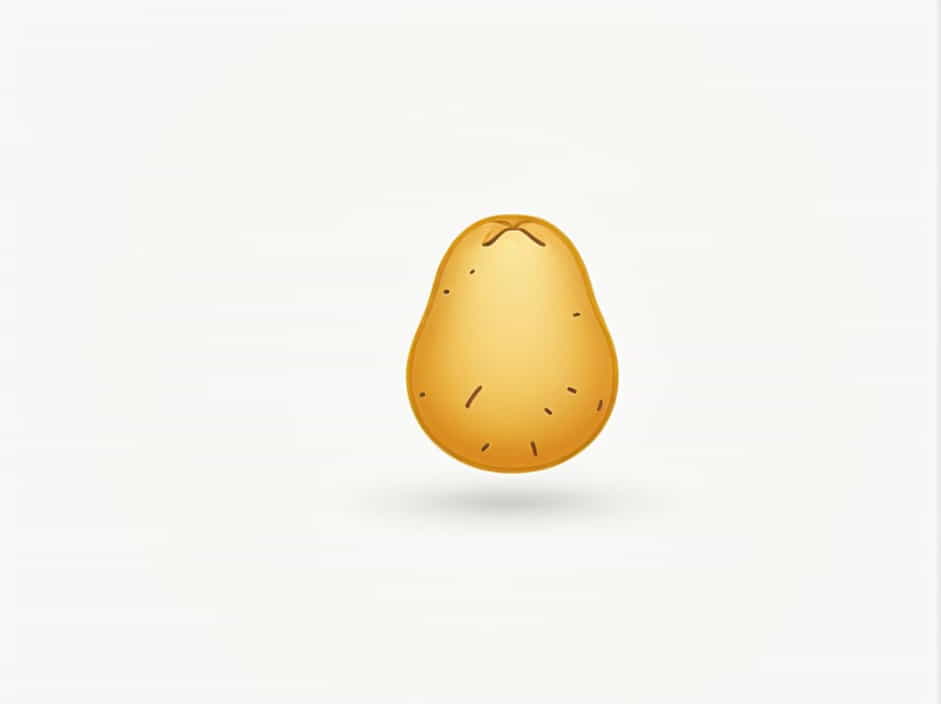Potato spindle tuber disease is a serious condition that affects potato crops worldwide. It is caused by the Potato Spindle Tuber Viroid (PSTVd), a small infectious RNA molecule that disrupts plant growth. This disease leads to stunted plants, elongated tubers, and reduced crop yields, making it a major concern for farmers and agricultural experts.
In this topic, we will explore what causes potato spindle tuber disease, its symptoms, transmission, and effective ways to prevent its spread.
What Causes Potato Spindle Tuber Disease?
1. The Role of Potato Spindle Tuber Viroid (PSTVd)
Unlike many plant diseases caused by bacteria or fungi, potato spindle tuber disease is caused by a viroid—a tiny, circular RNA molecule. PSTVd does not produce proteins but instead interferes with the host plant’s gene regulation, leading to abnormal growth and development.
2. How the Viroid Spreads
PSTVd spreads through:
- Infected seed potatoes – When tubers from infected plants are replanted, they carry the viroid to new crops.
- Vegetative propagation – Potato plants grown from infected cuttings can transmit the disease.
- Insects and human activity – Mechanical transmission through contaminated tools, hands, and insect vectors can spread PSTVd from one plant to another.
Symptoms of Potato Spindle Tuber Disease
Early detection is crucial in controlling the spread of this disease. Some key symptoms include:
1. Effects on Potato Plants
- Stunted growth – Plants appear smaller than normal.
- Leaf curling and yellowing – Leaves become wrinkled or twisted.
- Reduced vigor – The plant’s overall health deteriorates.
2. Effects on Potato Tubers
- Spindle-shaped or elongated tubers – Instead of normal rounded potatoes, affected tubers become narrow and pointed.
- Cracking and rough skin – The texture of the potato changes, making it less marketable.
- Sprouting abnormalities – Buds on tubers may grow abnormally, leading to weak plants.
How the Disease Spreads in the Field
1. Seed Transmission
One of the main reasons PSTVd is so difficult to control is that it spreads through infected seed potatoes. Farmers who unknowingly plant diseased tubers can introduce the viroid into their fields, leading to widespread infections.
2. Mechanical Transmission
PSTVd can be spread through:
- Contaminated knives, pruning shears, and farm equipment
- Hands of workers who handle infected plants
- Grafting infected plant material onto healthy plants
3. Insect Vectors
Some insects, such as aphids and leafhoppers, may contribute to the spread of PSTVd by feeding on infected plants and transferring the viroid to healthy ones.
Impact of Potato Spindle Tuber Disease
1. Economic Losses
- Reduced crop yields lead to lower profits for farmers.
- Infected potatoes often lose their market value due to poor quality.
- Some countries ban the import or export of infected potatoes, affecting international trade.
2. Agricultural Challenges
- Difficult to detect early – The disease may not show symptoms until later stages.
- No chemical treatment available – Unlike fungal or bacterial infections, PSTVd cannot be treated with pesticides.
- Long-term soil contamination – The viroid can persist in plant debris, affecting future crops.
How to Prevent Potato Spindle Tuber Disease
1. Use Certified Disease-Free Seeds
One of the most effective ways to prevent PSTVd is to plant certified virus-free seed potatoes. Many agricultural agencies regulate seed production to ensure they are free from viroids.
2. Sanitize Tools and Equipment
Since mechanical transmission is a major factor, farmers should:
- Regularly disinfect knives, pruning tools, and farm machinery.
- Wash hands after handling plants to avoid spreading the viroid.
3. Rotate Crops
Avoid planting potatoes in the same field year after year. Crop rotation with non-host plants like corn or beans can help break the cycle of infection.
4. Monitor and Remove Infected Plants
Farmers should:
- Inspect potato crops regularly for symptoms of PSTVd.
- Remove and destroy infected plants immediately to prevent further spread.
5. Control Insect Vectors
Since some insects can spread PSTVd, using integrated pest management (IPM) strategies can help reduce their numbers. This includes:
- Using natural predators like ladybugs to control aphid populations.
- Applying organic or chemical insecticides when necessary.
6. Genetic Resistance and Research
Ongoing research aims to develop potato varieties that are resistant to PSTVd. While no fully resistant varieties exist yet, scientists continue to explore genetic solutions.
Potato spindle tuber disease is a serious threat to potato farming, caused by the Potato Spindle Tuber Viroid (PSTVd). It spreads through infected seed potatoes, mechanical transmission, and insect vectors, leading to stunted plant growth, deformed tubers, and economic losses.
Since there is no chemical cure, prevention is the best defense. Farmers can protect their crops by using certified seeds, sanitizing tools, rotating crops, monitoring plants, and controlling insect populations.
By taking these proactive measures, the spread of PSTVd can be minimized, ensuring healthier potato crops and better yields for future harvests.
